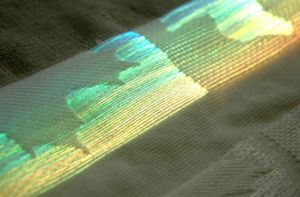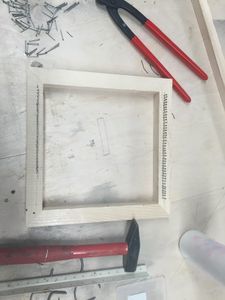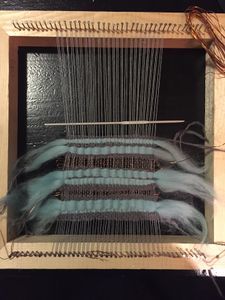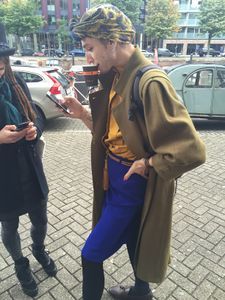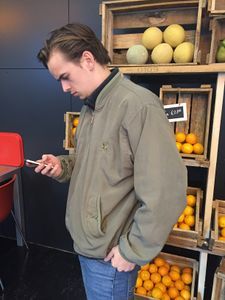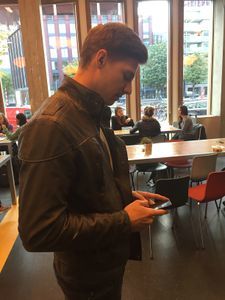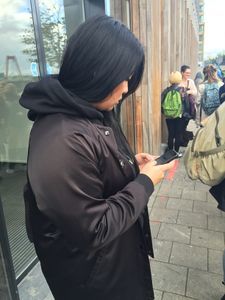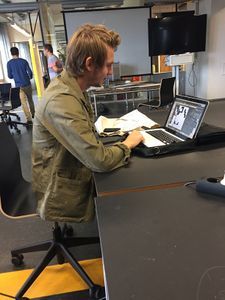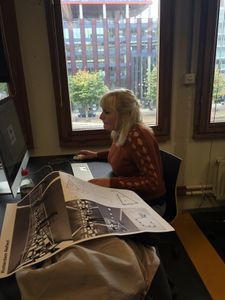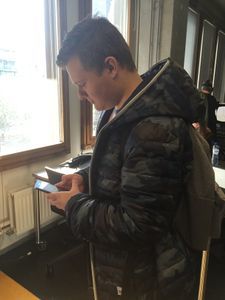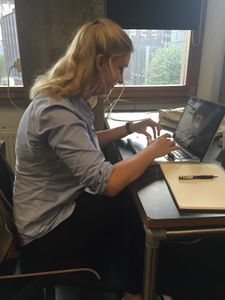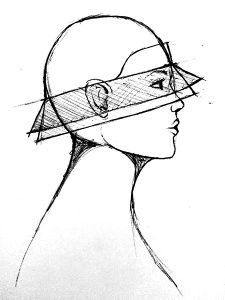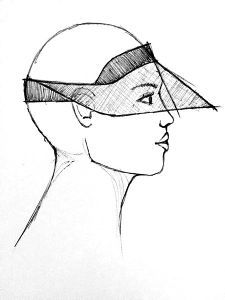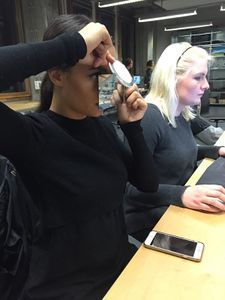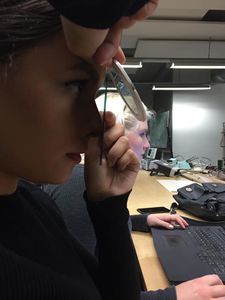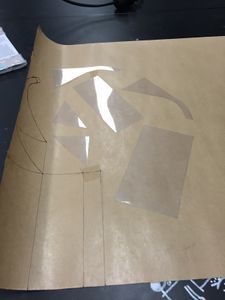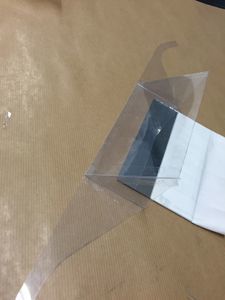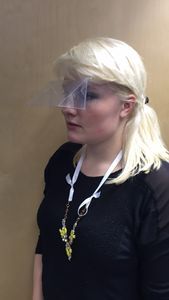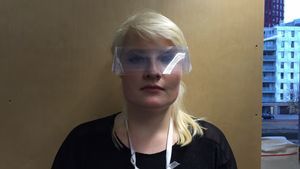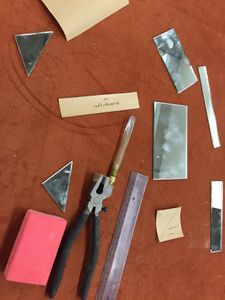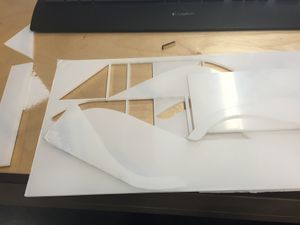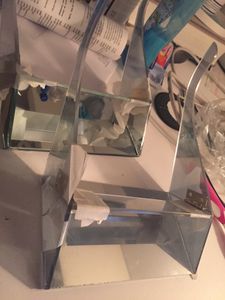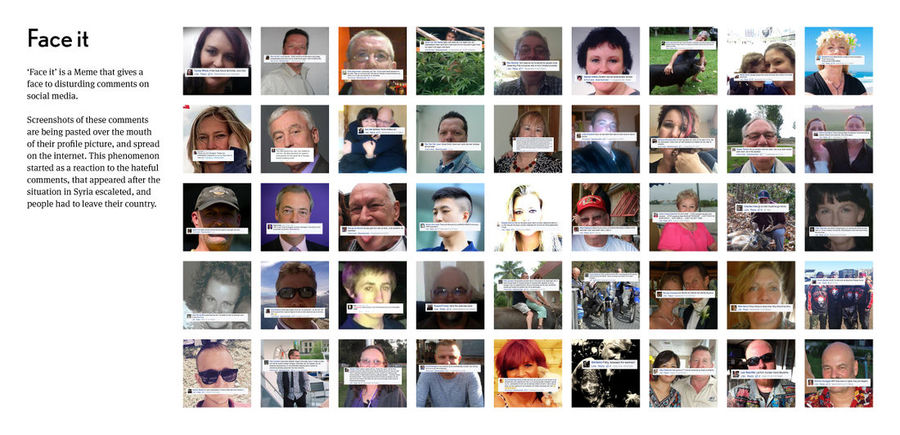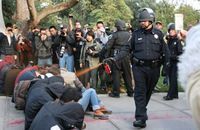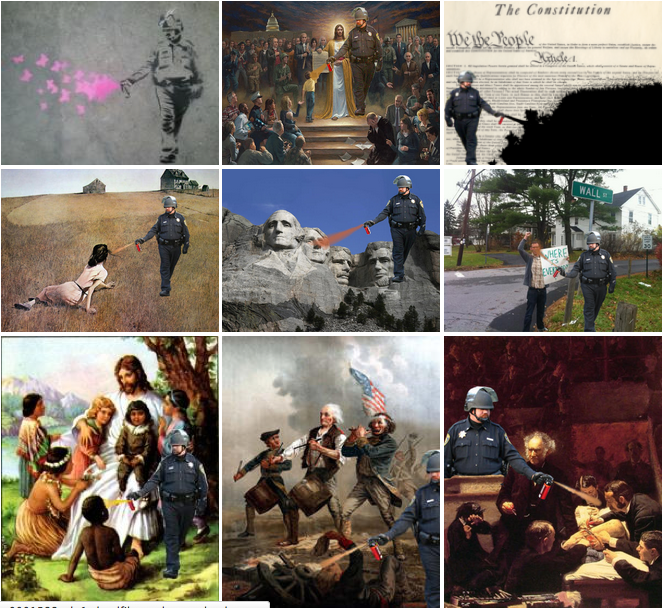Difference between revisions of "MINOR"
CarlyMuller (talk | contribs) |
CarlyMuller (talk | contribs) |
||
| Line 60: | Line 60: | ||
<gallery mode="nolines" widths="300px" heights="300px"> | <gallery mode="nolines" widths="300px" heights="300px"> | ||
06-color-changing-inventions-smart-fabric-cameleons.jpg | 06-color-changing-inventions-smart-fabric-cameleons.jpg | ||
| + | |||
| + | |||
---- | ---- | ||
| + | |||
| + | |||
| + | |||
| + | ==HAPTIC FABRIC== | ||
| + | |||
| + | PROJECT JON – MEMORY HAPTIC (memory by touch) | ||
| + | |||
| + | Every vintage garment comes with a story. Little is more exciting than being able to trace the origin of a garment. Even in cases when you cannot find any details beyond where you yourself came across a piece, it takes only a drop of imagination to create those special stories yourself. Owning and wearing vintage clothing is a way of keeping those people and those histories and that artistry alive. | ||
| + | |||
| + | This fabric is a method to visualize these memories and a way of keeping those people and those histories and artistry alive. The memories that are actually stored in these clothing will be able to read by touching the material, following the patterns and reveling its provenance. | ||
| + | |||
| + | For me as a fashion designer, I'm addicted to buy clothing and every piece that I've bought is special to me. When I look into my own closet, I see so many memories. Even though I'm not wearing it, for me every piece that i've bought has there own emotional story that refers to a memory. I never trow or give something away, I collect them because I'm emotionaly attached to them. | ||
| + | |||
| + | Because of the mass fabrication of goods at low costs, people are not aware of the production that entails long and precise processes before those goods reach our hands. We are paying far less for the real impact they have in society en environment. Because of these low costs, most of the consumers do not value the clothes. Some of them wear it a couple of times and trow them away. To change this I think we need to add some emotional value to clothing. | ||
| + | |||
| + | |||
| + | '''PROCESS''' | ||
| + | |||
| + | For this project we created a fabric and I have woven cupper dread into the fabric. | ||
| + | |||
| + | |||
| + | <gallery mode="nolines" widths="300px" heights="300px"> | ||
| + | IMG_6598.JPG| I have made my own medium, weaving frame | ||
| + | IMG_6616.JPG | ||
| + | </gallery> | ||
| + | |||
| + | |||
| + | |||
| + | ---- | ||
| + | |||
| + | |||
| + | |||
| + | |||
== TEXT NECK == | == TEXT NECK == | ||
Revision as of 09:30, 15 December 2015
PROJECT GABRIELLE
Contents
SMART TEXTILES
WHAT IS THE FUTURE OF FABRICS?
The meaning of function for clothing now is that they:
- We wear clothing to provide coverage
- Convey our sense of style
- Protect us from the environmental elements
The future of clothing as we know is about to change in a big way. Smart textiles are paving the way for this change.
What are smart textiles?
These are fabrics that have been developed with new technologies that provide added value to the wearer. They are revolutionary because they have the ability to do many things that traditional fabric cannot such as:
- Communicate
- Transform
- Conduct energy
- Grow
You can devide them into two catagories:
* AESTHETIC EXAMPLES
include everything from fabrics that:
- light up/ change color
- gather energy from the enviroment by hardnessing (vibration, sound, heat) reacting to this imput
* PERFORMANCE ENCHANGING
will have huge impact on the:
- Athletic
- Extreem Sports
- Military Industries
think about fabrics that
- regulate body temperature
- reduce wind resistance
- control muscle vibration
All of wich help improve athletic performance
I want to focus on the Aesthetic part
Create several examples
- Fiberglass Fabric with a cupper wire woven into it. The moment you touch it, it will activate the light that will be projected into the fabric.
- Fiberglass Fabric with LED lights and a wifi sensor AUDIUNO WITH WIFI(the moment you are close to wifi, the fabric will light up)
- Fiberglass Fabric with LED lights that capture your surroundings and transform them into patterns and project them into the fabric.
- ----
- ==HAPTIC FABRIC==
- PROJECT JON – MEMORY HAPTIC (memory by touch)
- '''PROCESS'''
- For this project we created a fabric and I have woven cupper dread into the fabric.
TEXT NECK
This assignment was about observing how technology is affecting human behavior and investigating how our body is evolving due to use of technology. Text Neck is a project about how people are addicted to their digital devices and how it effects our posture. It is a world wide problem and nowadays children are using these digital tools as well. Because they are still in their growing period it has effect on the physical deformity of the posture.
For this project I collaborate with graphic designer Julia Rahllf. We decided to focus on the bent neck pain. We sketched a future scenario that we have long bent necks in the future. That is caused by relentless use of mobile phones.
We are criticizing our society with humoristic and exaggerated illustrations of how we are/will look like. After observations and field research we found that neck pain caused by technology is already a big problem. We sketched a scenario how people might look like in the future and also what we will need to use for preventing this problem. We think that its going to be impossible to make people stop using their phones, therefore we wanted to make something that will help people keep a good body posture while they are using their mobile phone.
When people are walking in the streets looking at their phone, they are kind of in their own bubble. Our accessorize does not prevent people from being in their own bubble, it actually helps people to still be in this digital world, but one thing is different - the body posture is now straitened and no one is suffering from the deformity of the posture.
RESEARCH
According to Hansraj,5 “text neck” may lead to early wear and tear on your spine and early spinal degeneration. As you repeatedly pull and stretch this area, it may become inflamed over time, which can result in muscle strain, pinched nerves, herniated discs, and abnormalities to your neck’s natural curvature.
This forward neck posture has also been linked to headaches, neurological problems and heart disease. That is sad because it is relatively easy to assume a healthy natural posture with your neck. All you need to do is slide your chin up at 45 degrees, which puts your head over your shoulders and causes your chest to move forward.
FIELD RESEARCH
PROCESS
FACE IT
In collaboration with graphic designers Rens van Pixteren and Julia Rahllf we created a Meme called 'Face it'. It is a Meme that gives a face to disturding comments on social media. Screenshots of these comments are being pasted over the mouth of their profile picture, and spread on the internet. This phenomenon started as a reaction to the hateful comments, that appeared after the situation in Syria escalated, and people had to leave their country.
MEMES
PEPPER SPRAYING COP
ABOUT
Pepper Spray Cop (also known as “Casually Pepper Spray Everything Cop”) is a photoshop meme based on a photograph of a police officer offhandedly pepper spraying a group of Occupy protesters at the University of California Davis in November 2011.
ORIGIN
The pepper spraying cop is an meme based on a event during an Occupy movement demonstration at the University of California, Davis. The UC Davis pepper-spray incident occurred on November 18, 2011. After asking the protesters to leave, University police pepper sprayed a group of demonstrators as they were seated on a paved path in the campus quad. The video of UC Davis police officer Lt. John Pike pepper spraying demonstrators spread around the world as a viral video and the photograph became an meme.
In October 2013, a judge ruled that Lt. John Pike, the pepper sprayer, would be paid $38,000 in worker's compensation benefits, to compensate for his psychological pain and suffering. Apart from the worker's compensation award, he retained his retirement credits.
After the incident, large protests against the use of pepper spray occurred on campus. UC Davis Chancellor Linda P.B. Katehi apologized to the students, saying that the police had acted against her orders for there to be no arrests and no use of force. A public debate about the militarization of the police and the appropriate use of pepper spray on peaceful protesters took place in the media, with questions raised about the freedom of speech and the right to peaceably assemble guaranteed by the First Amendment to the United States Constitution.
SPREAD
Compounded by previous episodes involving the police use of pepper spray against Occupy protesters, the story of the incident itself was quickly picked up by nearly all major U.S. news media outlets, reaching its peak on November 22nd in terms of Google News volume.
Compilations of the images began appearing on Facebook community Occupy Lulz and BoingBoing on November 20th. The next day, additional compilations were posted on Washington Post, ABC News, the Metro, Gawker, and Buzzfeed. Four separate single topic Tumblrs were also created that day. Redditor andresmh created an interactive Pepper Spray Cop where users can take the exploitable cop and shoot pepper spray throughout the Trumbull painting.
On November 19th, Anonymous hacktivists in support of the Occupy Movement released contact information, home address and salary records of the UC Davis police officer Lt. John Pike, which was quickly picked up by a number of Anonymous-affiliate outlets on Twitter and Tumblr. As a result of the controversy, Pike has reportedly received more than 10,000 text messages and 17,000 emails critiquing his actions.[1]
